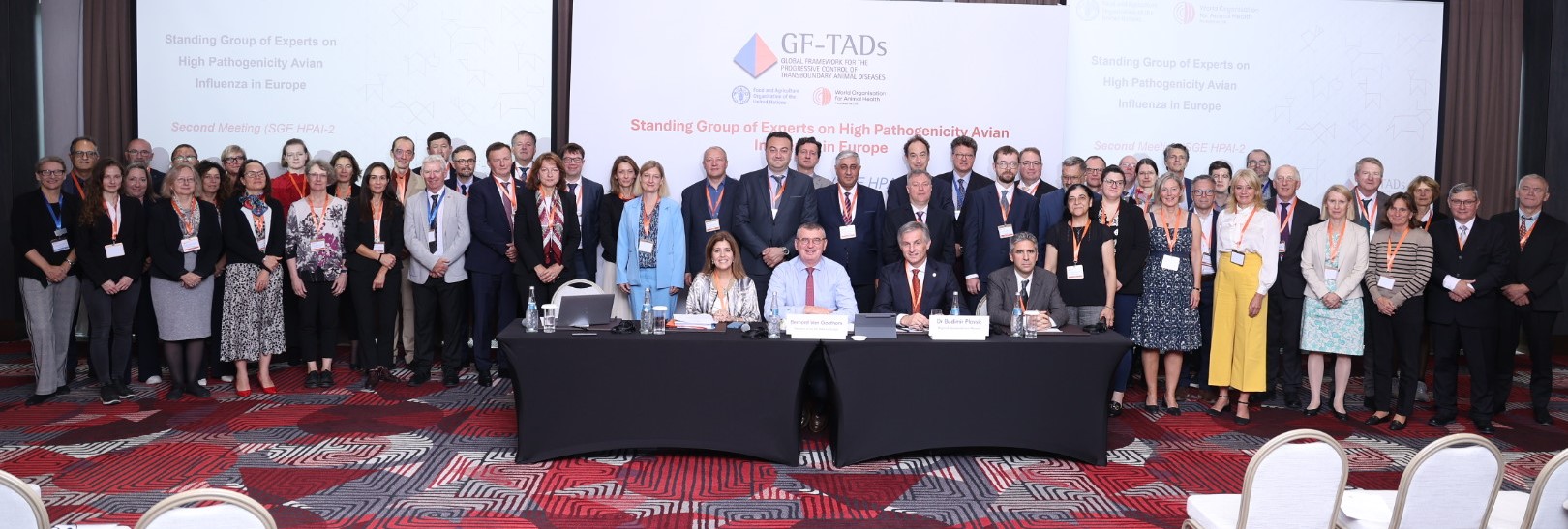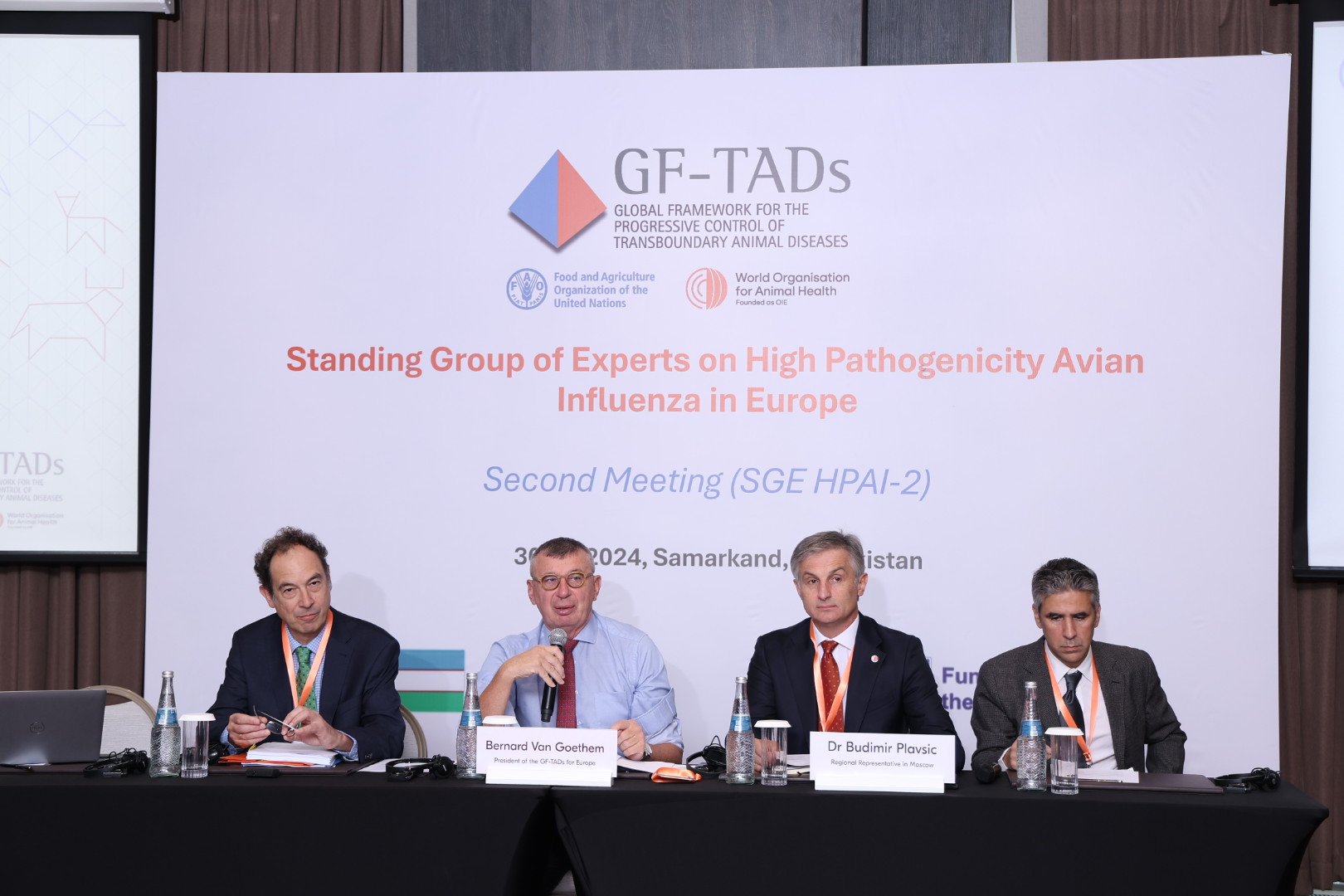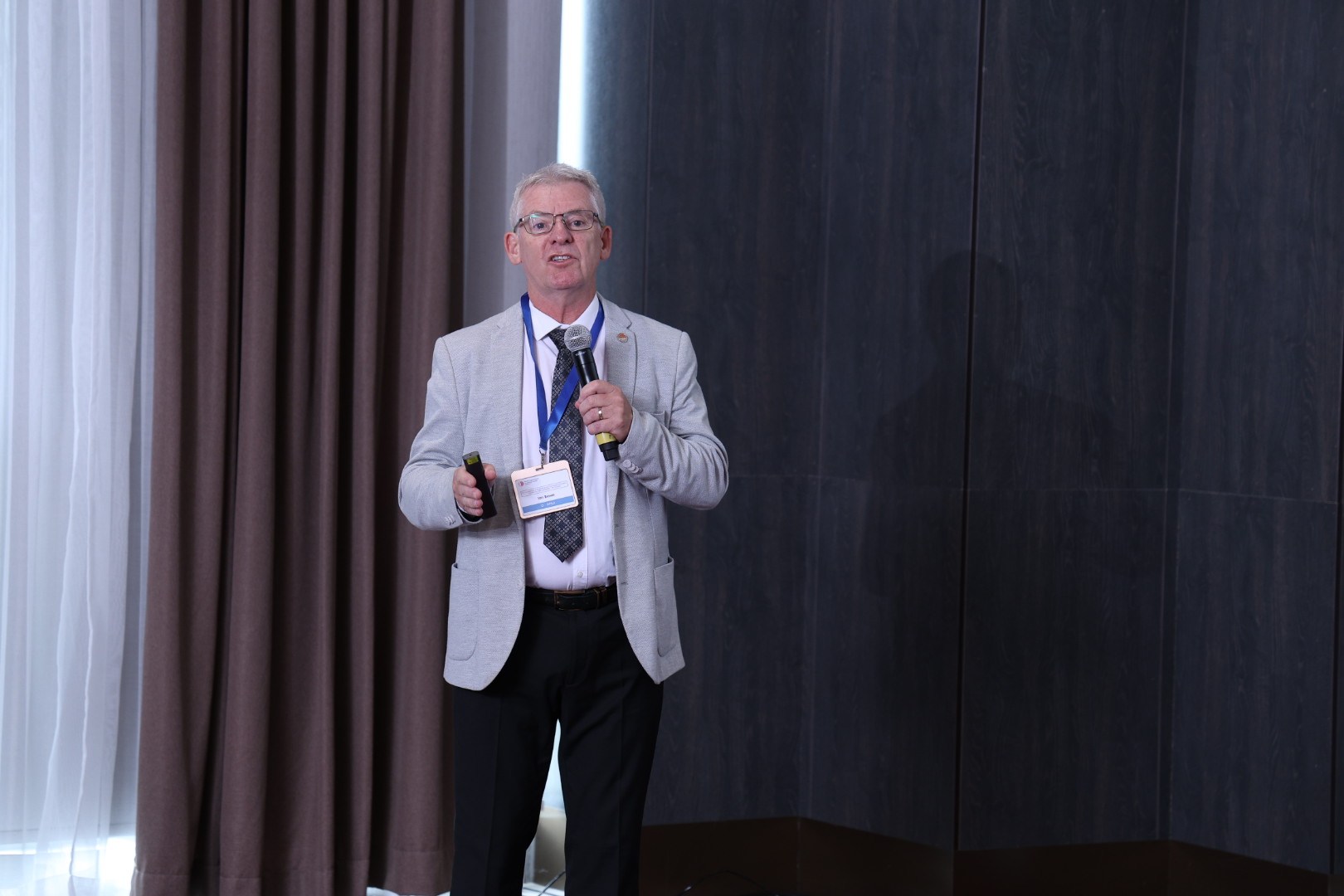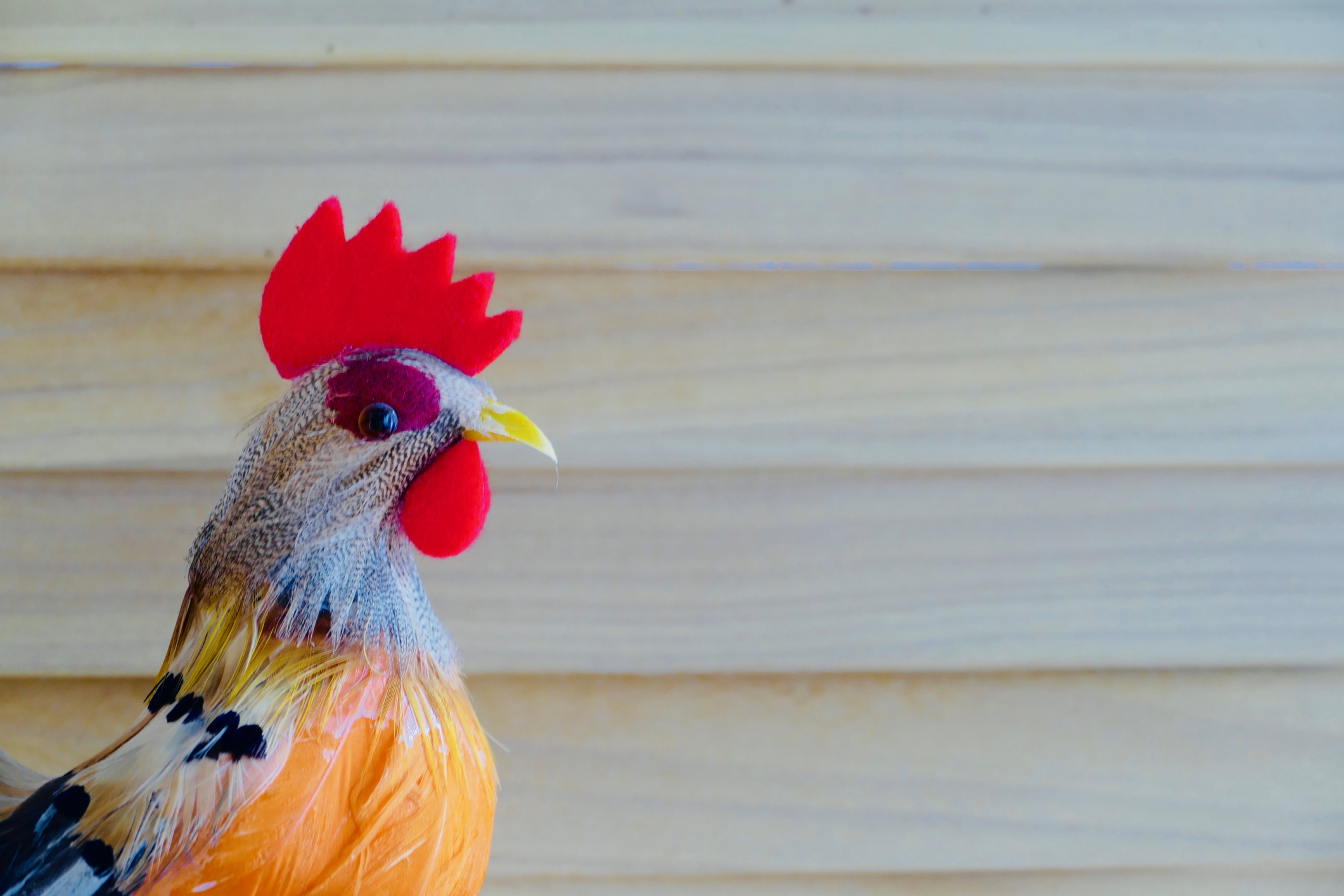The 2nd meeting of the Standing Group of Experts on HPAI (SGE HPAI-2) was held in the margins of the 31st WOAH Regional Conference for Europe in Samarkand, Uzbekistan, on 30th of September 2024. A total of 32 SGE-HPAI member countries from the European Region participated, with more than 60 participants attending the meeting in person and 23 online.
The objectives of the meeting were:
Dr Bernard Van Goethem, President of GF-TADs for Europe, Dr Budimir Plavsic, Permanent Secretariat of GF-TADs in Europe and SGE-HPAI opened and co-chaired the meeting, in accordance with agreed agenda. Dr Susana Pombo, President of WOAH and Delegate/CVO of Portugal, also attended the meeting, along with numerous delegates and representatives of FAO (Dr Daniel Beltran-Alcrudo) and other partner organisations. At the opening of the meeting, it was recalled that the Standing Group of Experts (SGE) on HPAI in Europe was established in 2023 to promote cooperation in the prevention and control of HPAI within Europe and with other regions, to share best practices on prevention and control measures and to ensure transparency, solidarity and mutual support. The first (virtual) meeting of this SGE took place in May 2023.
In her presentation, Dr Jenny Hutchison, WOAH Information and Analysis Department, highlighted that highly pathogenic avian influenza continues to spread globally, with significant impacts on poultry and wildlife.
Dr Alexandre Fediaevsky, HPAI Task Force, highlighted three key outcomes of the Global Strategy for HPAI: (i) to prevent HPAI epidemics, panzootics and negative impacts on biodiversity through multisectoral early detection and control; (ii) to protect poultry value chains, livelihoods, trade and the health of humans, ecosystems and other animals from the impacts of avian influenza; and (iii) to transform poultry value chains to improve resilience to avian influenza and other disease threats.
Dr Ian Brown, OFFLU Chair, Pirbright Institute, noted a strong correlation between HPAI incidence in wild birds and poultry populations, highlighting the critical role of wild bird surveillance in the early detection of emerging or novel strains.
Dr Etienne Bonbon, President of the Terrestrial Animal Health Standards Commission, highlighted the role of the WOAH Terrestrial Code as a centralised, comprehensive resource for the management of HPAI.
Dr Daniel Beltran-Alcrudo, FAO Regional Office for Europe and Central Asia, presented training and tools available to members.
Dr Francisco J. Reviriego Gordejo, EC, DG SANTE, reported on the EU strategy to combat HPAI outbreaks, which includes a robust surveillance system, strict biosecurity measures and rapid notification. Vaccination is not a substitute for other preventive measures, but a complementary tool.
Dr Taina Aaltonen, WOAH Delegate, Deputy Director General, CVO, Finland, spoke about the One Health approach in the multi-agency response involving the Finnish Food Authority, the Institute of Health and Welfare and other key players to ensure rapid information sharing and coordinated decision-making.
Dr Olivier Debaere, Project Manager for Epizootics (HPAI/ASF), France, presented the French experience with vaccination campaigns and how, in accordance with WOAH standards and EU Regulation 2023/361, a system of active and passive surveillance of vaccinated birds was put in place to verify the absence of virus circulation.
Dr Julie Gauthier, USDA APHIS, highlighted the key principles of structural and operational biosecurity and emphasised that biosecurity is of paramount importance in HPAI control.
Dr Isabella Monne, WOAH/EU and National Reference Laboratory for Avian Influenza & Newcastle Disease, provided information on the genetic evolution of highly pathogenic avian influenza (HPAI) viruses of clade 2.3.4.4b in Europe during the 2023-2024 epidemiological year. The new genotypes have emerged and are circulating alongside those from previous epidemic waves.
The SGE HPAI-2 discussed and agreed in further consultations on specific recommendations, which were approved following online input from members and experts, together with the final report from the meeting.
The SGE HPAI agreed that the third meeting of the Standing Group of Experts on HPAI in Europe (SGE HPAI-3) under the GF-TADs will be held in person in 2025.
The Chair of the SGE and President of the Regional Steering Committee of the GF TADs for Europe, Dr Van Goethem, explained that the current situation in Europe regarding HPAI is that a new SGE is a proven mechanism to discuss and promote transparent communication between member countries, CVOs, experts and partners. Discussions and jointly developed recommendations are an important step in defining technical guidelines for the region.
Dr Brown: Global HPAI outbreaks (mainly H5N1, H5N8) are rising in poultry and wild birds, with spillover to mammals. Migratory birds spread the virus, highlighting the need for robust surveillance in both wild birds and poultry, vaccination, and international collaboration for effective control.
“Our rapid and decisive response to the 2023 HPAI outbreak demonstrates the successful application of a One Health approach,” says Dr. Taina Aaltonen, WOAH Delegate and CVO of Finland. “Through proactive surveillance, multi-sectoral cooperation, and robust biosecurity measures, we effectively managed the outbreak and prevented human cases”.
“Despite a decrease in HPAI outbreaks in Europe, the virus continues to evolve and diversify,” warns Dr. Isabella Monne of the WOAH/EU and National Reference Laboratory. “Ongoing genomic surveillance is crucial to identify emerging genotypes and assess their risk to both poultry and mammals, including humans.”
Dr. Monne highlights the persistent evolution of HPAI viruses in Europe, emphasizing the importance of continuous genomic surveillance to track emerging genotypes and inform effective control strategies. She stresses the need for real-time monitoring and data sharing to address the evolving threat of HPAI.
Easter cock on wooden background
To combat the spread of highly pathogenic avian influenza, the expert group urges research institutions and vaccine manufacturers to:
By working together and taking advantage of the latest scientific advances, we can improve our ability to control and prevent HPAI outbreaks.
Presentations:
| Session 1: Global development and activities |
| Global and regional epidemiological situation on HPAI situation (including in mammals): Dr Jenny Hutchison, Head of the World Animal Health Information and Analysis Department. Download |
| Global Strategy on Avian Influenza, regional and subregional implementation: Dr Alexandre Fediaevsky, GF-TADs Global Secretariat. Download |
| Current knowledge for optimising HPAI surveillance and Scientific update from OFFLU: Dr Ian Brown, OFFLU Chair, Pirbright Institute. Download |
| Use of the Terrestrial Animal Health Code for prevention and control of infection with HPAI virus, including vaccination and trade: Dr Etienne Bonbon, President of the Terrestrial Animal Health Standards Commission. Download |
| Session 2: Regional and national activities |
| FAO regional initiatives on avian influenza: Dr Daniel Beltran-Alcrudo, Technical Advisor (Animal Health), FAO Europe and Central Asia. Download |
| Activities of the EU regarding HPAI: Dr Francisco J. Reviriego Gordejo, EC, DG SANTE, TBC. Download |
| Best practices in Finland: Experience with HPAI in animals and humans (One Health approach, biosecurity, vaccinations): Dr Taina Aaltonen, WOAH Delegate, Deputy Director General, CVO. Download |
| Best practices in France: experience with poultry vaccination, challenges and opportunities: Dr Olivier DEBAERE, Project Director for Epizootics (HPAI/ASF). Crisis Director. Download |
| Best practices in the USA: Experience with the control of HPAI, including in mammals: Dr Julie Gauthier, Executive Director for Field Operations, USDA (online). Download |
| Monitoring the genetic evolution of HPAI in Europe: insights from the WOAH/FAO/EU Reference Laboratory at the IZSVe: Dr Isabella Monne, WOAH/EU and National Reference Laboratory for avian influenza & Newcastle disease. Download |





